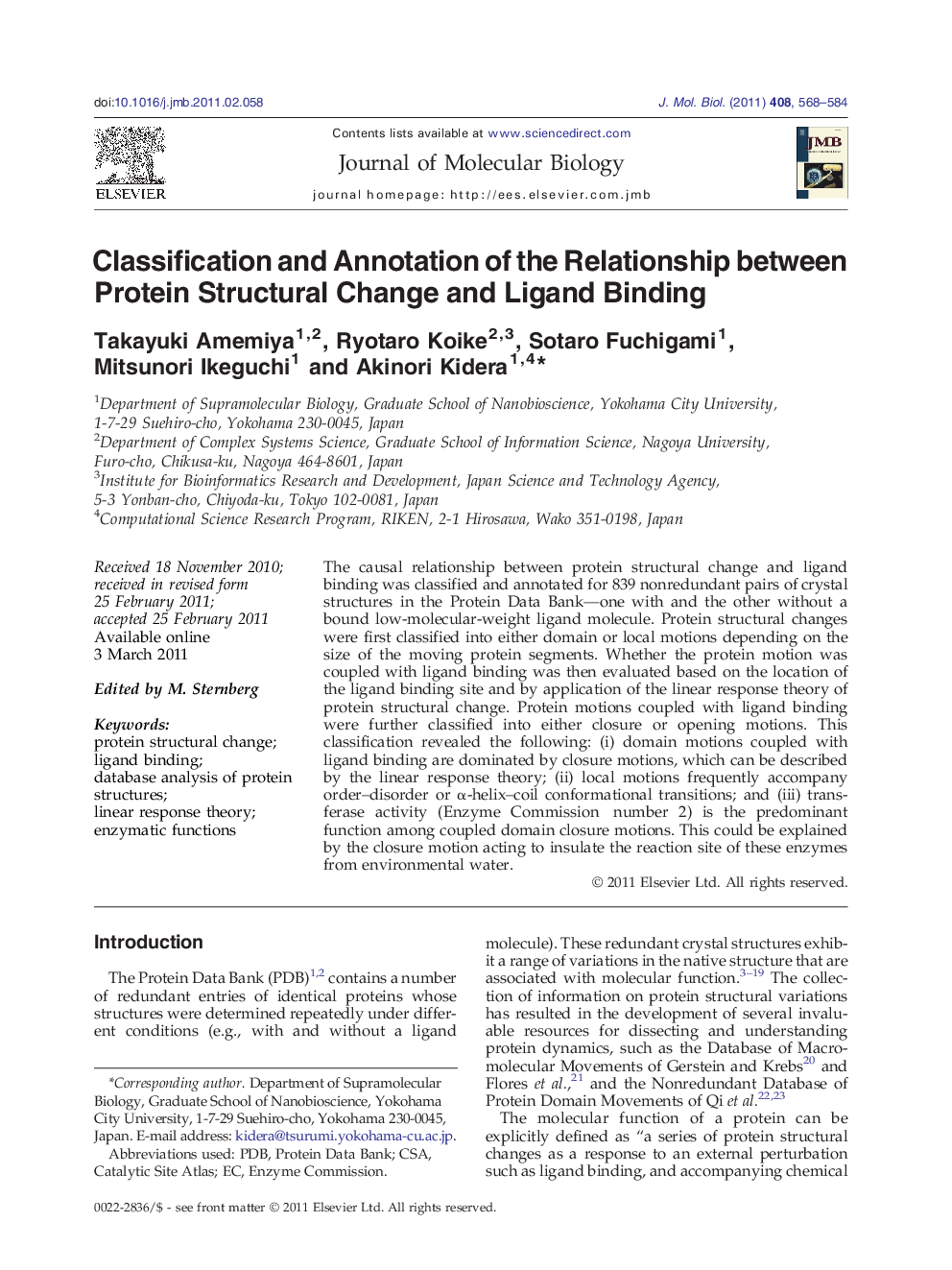| Article ID | Journal | Published Year | Pages | File Type |
|---|---|---|---|---|
| 2185332 | Journal of Molecular Biology | 2011 | 17 Pages |
The causal relationship between protein structural change and ligand binding was classified and annotated for 839 nonredundant pairs of crystal structures in the Protein Data Bank—one with and the other without a bound low-molecular-weight ligand molecule. Protein structural changes were first classified into either domain or local motions depending on the size of the moving protein segments. Whether the protein motion was coupled with ligand binding was then evaluated based on the location of the ligand binding site and by application of the linear response theory of protein structural change. Protein motions coupled with ligand binding were further classified into either closure or opening motions. This classification revealed the following: (i) domain motions coupled with ligand binding are dominated by closure motions, which can be described by the linear response theory; (ii) local motions frequently accompany order–disorder or α-helix–coil conformational transitions; and (iii) transferase activity (Enzyme Commission number 2) is the predominant function among coupled domain closure motions. This could be explained by the closure motion acting to insulate the reaction site of these enzymes from environmental water.
